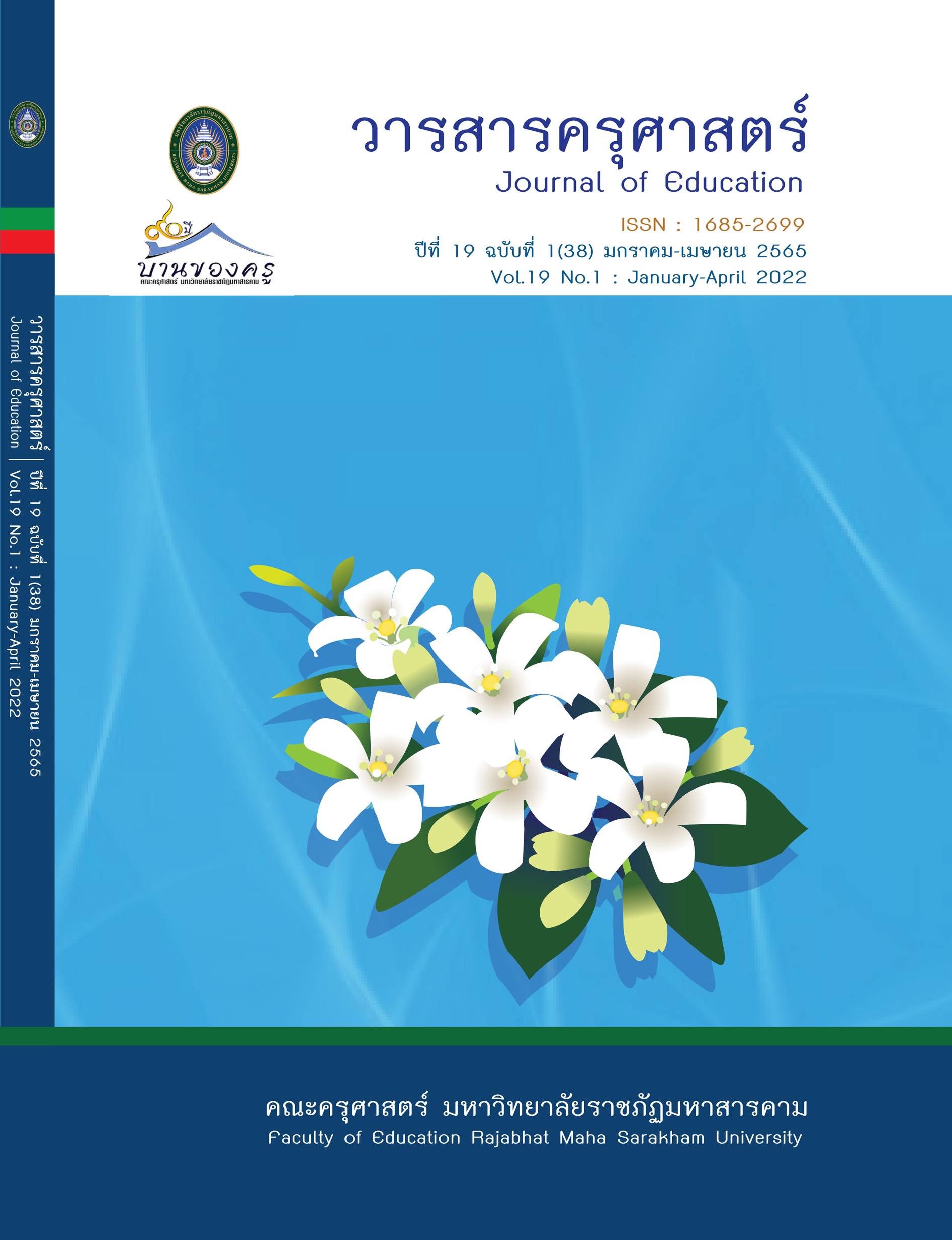Cotton Rope for Binding Wrist: Discourses, Roles and Significations in Isan Society
Main Article Content
Abstract
This research aimed to: 1) study discourses, blessings speech in Isarn binding wrist ritual 2) study the role of the cotton thread for binding wrist or Fai Pook Khaen 3) to study the symbolism of the cotton thread in the northeastern society. The results found as follow;
1. There were 2 types of discourses for binding the wrists; 1) the discourse of teachings in Isarn blessing in binding wrist ceremony, and 2) the discourse of the greeting in the ceremony.
2. There were 3 characteristics of the roles of the cotton thread in Isan society; 1) the role of the solution to relieve the grievances, 2) the role of explaining the origin and importance of rituals, and 3) the role in the society norms preservative.
- There were 3 characteristics for the cotton thread symbolism; 1) creating the sacred symbol, 2) creating sacred symbols through rituals, and 3) creating sacred symbols through the actions of the binders and participants in the ritual.
Cotton thread is a product of Buddhism, Brahmanism and belief in spirits, which affected to Isan society deeply. It is an inheritance of the thinking system, and the beliefs inherited from the past until the present.
Article Details

This work is licensed under a Creative Commons Attribution-NonCommercial-NoDerivatives 4.0 International License.
ข้อกำหนดเบื้องต้นที่ผู้นิพนธ์(ผู้ส่งบทความ) ควรทราบ
1. ผู้นิพนธ์ที่ประสงค์จะลงตีพิมพ์บทความกับวารสาร ตั้งแต่เดือนมกราคม 2563 เป็นต้นไป ให้ใช้รูปแบบใหม่ (Template 2563) โดยสามารถดูตัวอย่างได้ที่เมนู GUIDELINES
2. จะตีพิมพ์และเผยแพร่ได้ ต้องผ่านการประเมินจากผู้ทรงคุณวุฒิ (Peer Review)
3. การประเมินบทความโดยผู้ทรงคุณวุฒิ (Peer Review) เป็นแบบ Double Blind
4. การอ้างอิงบทความใช้หลักเกณฑ์ APA (American Psychological Association) คลิก
5. บทความถูกปฏิเสธการตีพิมพ์ ไม่ผ่านการประเมิน ผู้นิพนธ์ขอยกเลิกเองหรือชำระเงินก่อนได้รับการอนุมัติ ทางวารสารไม่มีนโยบายการคืนเงิน
References
กาญจนา แก้วเทพ. (2542). การวิเคราะห์สื่อ : แนวคิดและเทคนิค. (พิมพ์ครั้งที่ 2). เอดิสัน เพรส โพรดักส์.
เกิด ศรีวะรมย์. (2563). (การสื่อสารส่วนบุคคล, 3 กุมภาพันธ์ 2563) สัมภาษณ์.
ไชยรัตน์ เจริญสินโอฬาร. (2554). ภาษากับการเมือง/ความเป็นการเมือง. มหาวิทยาลัยธรรมศาสตร์.
บุญมี แท่นแก้ว, สถาพร มาลีเวชพงศ์, บุญเรือง อินทวรันต์, สุระ อุณวงศ์ และประพัฒน์ โพธิ์กลางดอน. (ม.ป.ป). พุทธศาสน์-ปรัชญา. (พิมพ์ครั้งที่ 3). โอ เอส ปริ้นเตอร์ เฮ้าส์.
ปิยลักษณ์ โพธิวรรณ์. (2559). กระบวนการสร้างพื้นที่ทางสังคมของผีอีสาน. วารสารกระแสวัฒนธรรม. 17 (32),100 -110.
พงศ์ธวัช เจริญฐิติวัฒน์, ปฐม หงส์สุวรรณ และวิชยา โยชิดะ. (2558). วาทกรรมคำอวยพรในวรรณกรรมคำผูกแขน
อีสาน. วารสารรมยสาร.15 (1), 253-261.
พงศ์ธวัช เจริญฐิติวัฒน์. (2558). วาทกรรมคำอวยพรในวรรณกรรมคำผูกแขนอีสาน
[วิทยานิพนธ์ปริญญามหาบัณฑิต ไม่ตีพิมพ์] มหาวิทยาลัยมหาสารคาม.
ศิราพร ณ ถลาง. (2552). ทฤษฎีคติชนวิทยา วิธีวิทยาในการวิเคราะห์ตำนาน-นิทานพื้นบ้าน. (พิมพ์ครั้งที่ 2).
จุฬาลงกรณ์มหาวิทยาลัย.
สมปอง ทานะเวช. (2563). (การสื่อสารส่วนบุคคล, 15 มีนาคม 2563) สัมภาษณ์.
สำลี รักสุทธี. (ม.ป.ป). สืบสานตำนานงานบุญประเพณีอีสาน. รุ่งเรืองสาส์นการพิมพ์.
เหลี่ยง ศรีกกโพธิ์. (2563). (การสื่อสารส่วนบุคคล, 14 กุมภาพันธ์ 2563) สัมภาษณ์.


